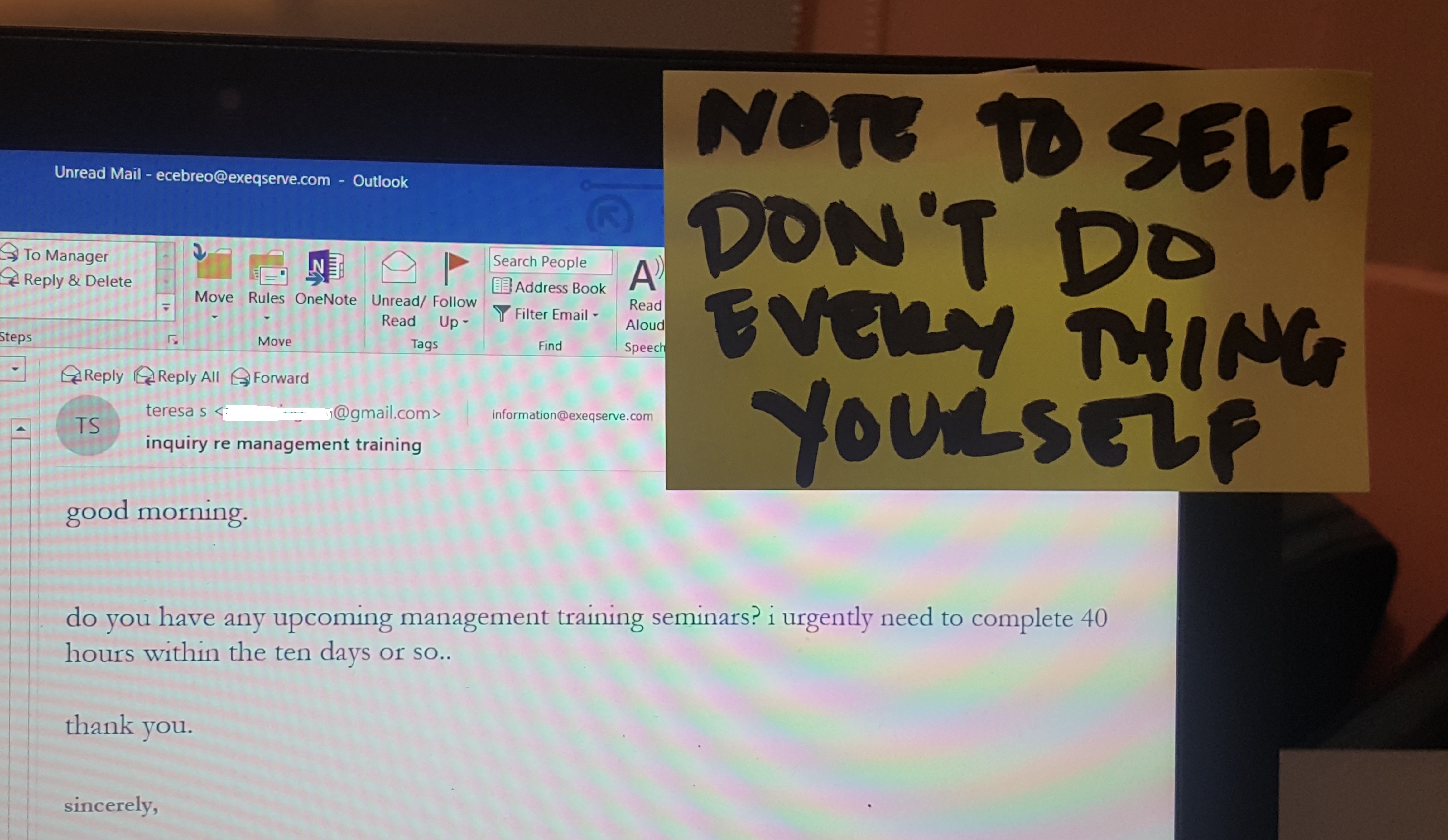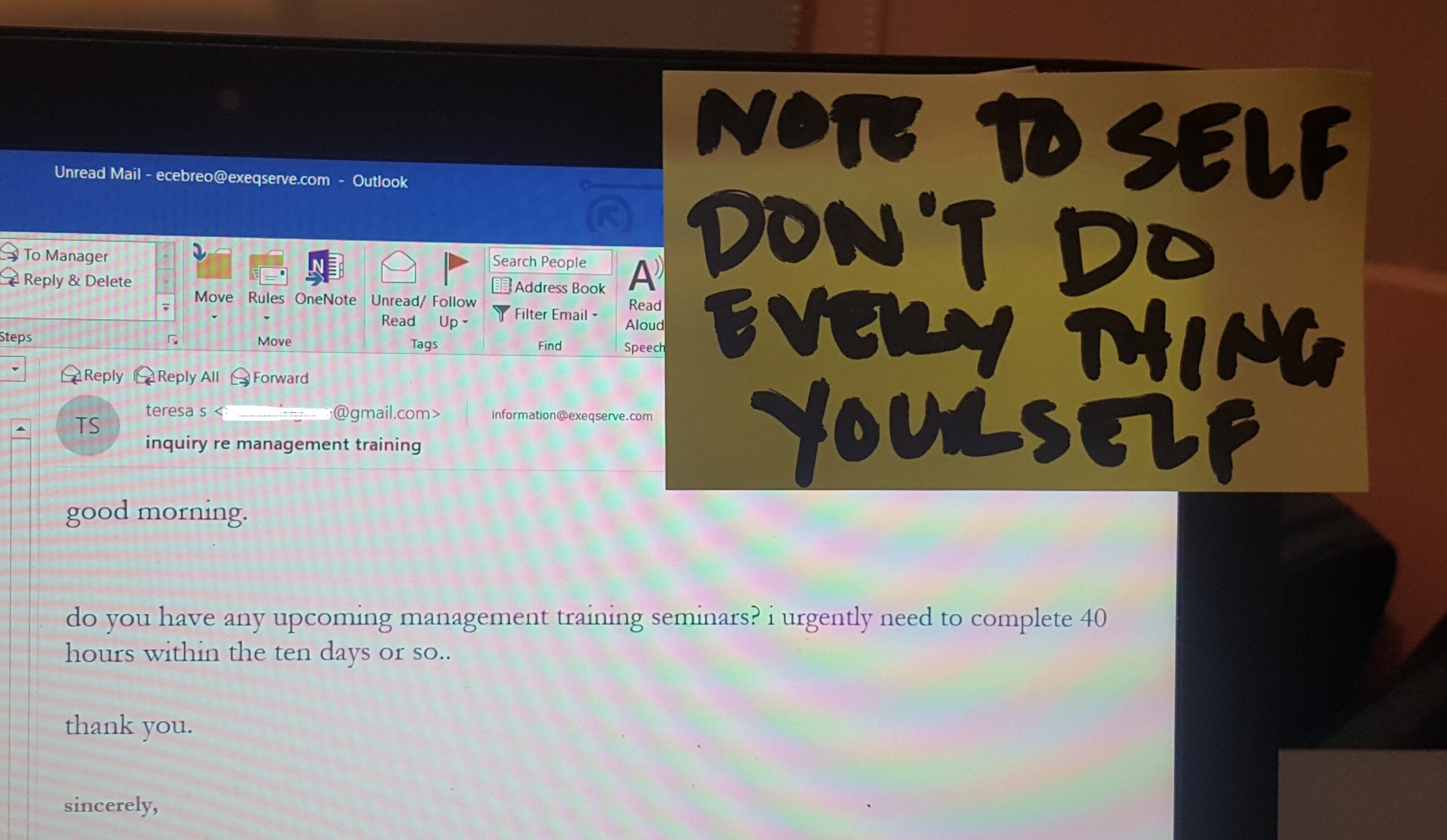 The ultimate goal is delegation. When I conduct training on People Handling Skills, I say that it is the ultimate goal, to get people ready for empowerment. It is not an easy journey to take. To empower people when they are not ready is to empower incompetence, it does not bid well for anyone. There are two things necessary for successful empowerment; employee readiness, and more importantly, manager readiness. It’s often the latter’s readiness for empowerment rather than the former that gets in the way of effective delegation and empowerment. Let me discuss this in detail:
The ultimate goal is delegation. When I conduct training on People Handling Skills, I say that it is the ultimate goal, to get people ready for empowerment. It is not an easy journey to take. To empower people when they are not ready is to empower incompetence, it does not bid well for anyone. There are two things necessary for successful empowerment; employee readiness, and more importantly, manager readiness. It’s often the latter’s readiness for empowerment rather than the former that gets in the way of effective delegation and empowerment. Let me discuss this in detail:
Getting the Leader/Manager Ready for Empowerment
When I ask training participants to do a self-assessment of their tendency to use different styles (directing, coaching, supporting, delegating) a lot would score high on coaching and supporting, some would score high on directing, and very few score high on delegating. In fact, very few score anything in delegation! Many of the participants get zero. A lot of them question the results. They believe they delegate all the time. When we review the questions, they realize there is one thing they are not comfortable with; giving people the freedom to make decisions about their work. Yes, they delegate responsibility, they (although not all of them) delegate accountability, but few delegate authority. They keep the authority because they think that it is necessary to keep control. They recognize that they can’t really fully delegate accountability, they can only share it. This means that if they delegate authority, and the employee messes up, they’ll be accountable for it, hence they keep the decision making to themselves.
To be ready to empower is to prepare oneself for the task of readying people for empowerment. This means facilitating through the different stages of employee development until they achieve the necessary competency and level of commitment necessary for full empowerment. This means equipping themselves with the necessary tools to facilitate competence building and building commitment. That will be the thing I’m talking about in the next segment of this article.
Getting the Employees Ready for Empowerment
I was a Training Manager for a BPO company. The company was undergoing a major change. The old CEO migrated and a new one with a very different management style took over. The old CEO was a hands-on micro manager who built the business from scratch, hence knew (controlled) every little detail of its operation. The new CEO on the other hand was less technical and more strategic in outlook. He was looking at growing the business, hence, he cannot be expected to make every bit of decision like in the past. The management team was struggling. They used to defer to the boss all the time. This arrangement is new to them and they were not comfortable with it. I sought a consultant and ask how we can transition. He gave me one great advice; to succeed in empowering people, you need to equip them for it. When you shape a clay pot, you don’t drop a lump of clay on the wheel and expect it to shape itself. The potter is very much involved in the shaping process, and let go only when the clay is fully formed and hardened through fire. Well, pots are pots, how do you do this with people? Paul Hersey and Ken Blanchard wrote a book called Situational Leadership that offers and good framework for facilitating competence and commitment development. Let me use the high level framework here and inject my own opinion in making it happen.
Directing Performance
When employees are new to their role, or tasks, if they’re new employees, newly promoted, or given a new responsibility, they will need more structure. This structure come in many forms; on-boarding, technical training, detailed instruction, walk-through, simulation, role-play, etc. Anything that will provide the employee with all the necessary information to meet performance expectations. We have such a thing called learning curve. The manager’s job is to walk with the employee through this journey and serve as the primary source of information if the employee is to perform according to standard. To not find the time to do this is to extend the learning curve. You won’t believe how long that curve can extend. It could for years! I’ve seen managers change their job descriptions to include the work that their staff are supposed to be doing because they end up doing the work themselves. That makes the learning curve extend indefinitely doesn’t it? So the key message is find time to train. People don’t learn overnight, so take as much time as you can afford or else, find people who don’t require training. Good luck with that. Hire the right people who have the potentials and then train them well.
Coaching to improve performance
People don’t learn overnight. I already said that. They will make mistakes, and often repeatedly unless there is a coach who can point out opportunities for improvement and facilitate performance improvement through constructive feedback and correction.
Supporting
Some employees are already competent but lack the necessary engagement to commit to performance. Some indicators include lack of participation in decision-making, lack of focus on result, tardiness and or absenteeism, among others. I think two things can make this happen; the employees personal circumstances (lovelife, domestic issues, etc), and work issues (person’s perception of growth, trust issues, and other workplace issues). The manager’s job is to recognize when this situation is happening with the employee, provide feedback and facilitate problem solving. It is important to note that I used the term facilitate rather than solve their problem for them. You can’t solve everyone’s problem but you can help by bringing the issue to the surface and making the employee accountable for finding for it. A useful structure for this conversation is the G.R.O.W. Model. I suggest that you research that approach or better yet, find a training opportunity to learn how to facilitate it.
Delegating
Delegating is more than just assigning work to people. Real delegation means assigning responsibilities, clarifying accountabilities, and most importantly, giving the employee an authority to make decisions within the realms of the given responsibilities. It helps to be clear about these three things. The more we’re clear about the limits of authorities given, the easier it is for people to make decisions. One of the hardest parts of delegation is the risk involved in giving authority. You know that when the person makes a bad decision, you will be accountable for it. This is why the three other steps are absolutely important.
Empowerment is the ultimate demonstration of trust and confidence. Not only does the employee have to work hard to earn it, the manager needs to help the employee earn it. To wait for employees to take this journey on their own is to fail in both leadership and management.
ExeQserve run’s training on People Management using the Situational Leadership as a Framework. Click here for more details.








